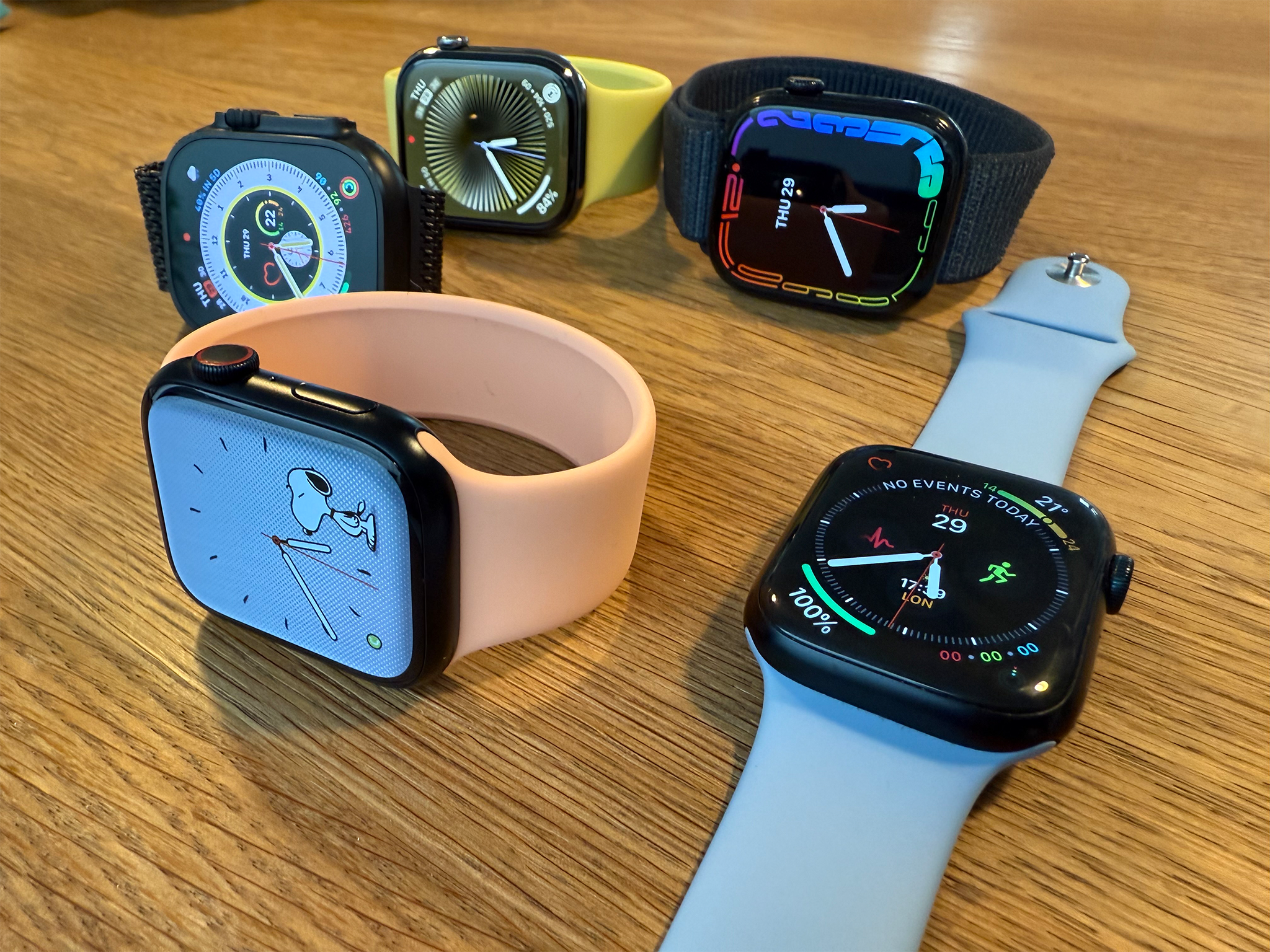It’s been 10 years since Apple’s first smartwatch was released, and the wearable has come a long way in that time (though you still need an iPhone to activate the Apple Watch and to act as a companion device).
Capable of much more than regular watches, Apple’s smartwatches can track your steps, calories, and how active you are during the day. They can measure exercise, from archery and yoga to running, swimming, walking and pickleball. A heart-rate monitor helps with the accuracy of fitness calculations, but it can also warn you if your heart rate goes unexpectedly high or low – there are cases of severe health episodes being prevented by timely Apple Watch notifications. Similarly, they can spot if you’ve taken a hard fall and can call loved ones or emergency services, with some models being able to measure blood oxygen levels and take an ECG.
Beyond health and fitness, Apple Watches are available with GPS to guide you, tapping you on the wrist when you need to turn. Plus, the wearables work as digital wallets, show you weather forecasts and track your sleep. The devices can even cause your iPhone to make a noise when you can’t remember where you’ve put it (I use this feature a lot). Plus, there’s the option of an always-on display, so you can sneak a look at your wrist to see the time during a dull office meeting without having to raise your wrist.
There’s also the pricier GPS and cellular version, which means the watch connects to the same network as your iPhone, so you don’t need to have both together to reap the benefits of connectivity. For example, you can go for a run without your iPhone but still send and receive messages, and have access to connected apps.
Every model comes in more than one colour, and there are scores of watch bands to choose from, meaning you can truly customise your device. You can also choose between different sizes and case materials (such as aluminium or titanium), plus there’s the option of glass or sapphire crystal as the protective covering on the watch face.
If you’re not sure which of Apple’s wearables is right for you, I’ve gone into detail on each one.
How I tested
As The Independent’s technology critic, I’ve been reviewing and covering Apple products from the beginning, and each of these Apple Watches has been tested in the same real-world scenarios that you will be using them in.

The review process involved using each device as if it were my own personal wearable, wearing each one for at least a month, taking it off only to charge it.
I considered the simplicity of setup and how easy it was to use apps such as Maps, Workout and Weather, as well as the breadth of available apps.
I tested all of the health features, including sleep tracking, heart-rate monitoring and ECG. I assessed the range of watch faces, the comfort of the various bands, the size of the display and the ease of legibility. Perhaps most importantly, I monitored how long the battery lasts.
Using my knowledge and experience in testing and reviewing consumer tech, I’ve ranked each Apple Watch based on its performance, giving it an overall star rating.
Why you can trust IndyBest reviews
David Phelan is The Independent’s technology critic, who covers everything from interviewing major players in the industry to writing IndyBest reviews and other articles. Having worked for the title since 1997, David has an abundance of experience when it comes to bringing you insightful, honest reviews of all the latest gadgets and devices.
The best Apple Watches for 2025 are:
- Best overall – Apple Watch series 10: From £399, Amazon.co.uk
- Best budget buy – Apple Watch SE 2nd generation: From £219, Amazon.co.uk
- Best fitness watch – Apple Watch ultra 2: From £699, Amazon.co.uk
- Best value – Apple Watch series 9, refurbished: From £211, Backmarket.co.uk
- Best for kids – Apple Watch series 8, refurbished: From £225.33, Amazon.co.uk


